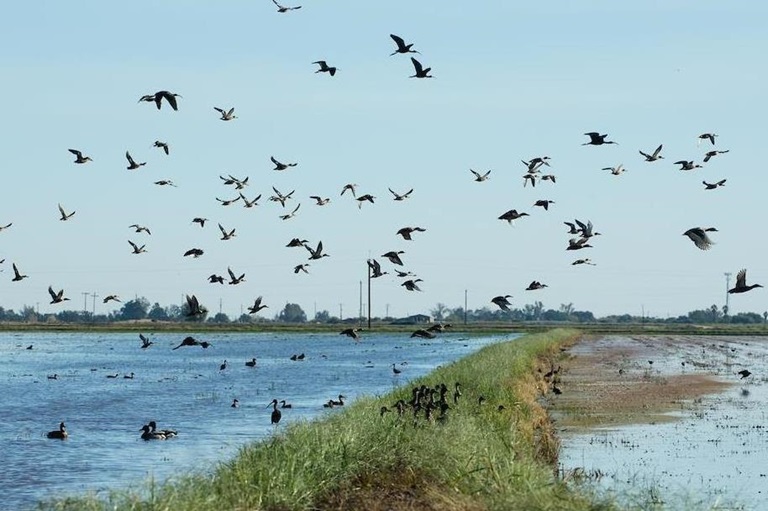Flood-MAR: Harnessing Flood Waters to Advance Sustainable Water Management
Birds populate recently harvested rice fields in Yuba County. DWR/ 2014
By Kamyar Guivetchi
California is known for its variable climate – its perennial oscillation between drought and flood events. Climate change will only exacerbate this variability, so water managers are eyeing a way to capitalize on the extremes by harnessing flood waters and redirecting them into parched aquifers.
The method is called Flood Managed Aquifer Recharge – or Flood-MAR – and it’s part of California’s effort to modernize its green and grey infrastructure and co-manage the state’s entire water portfolio for multiple public and private benefits.
Competing water demands across all sectors, limited and variable water supplies, and a complicated regulatory framework make it challenging to plan and manage for water resources sustainability in California. Water users, planners, managers, landowners, and policy-makers must collectively plan, manage, and adapt California’s water systems in a proactive way, to ensure the systems are resilient to changing conditions and able to adapt nimbly and dynamically to stressors. Only proactive strategic planning and adaptation – at state, federal, regional, and local levels – can ensure a sustainable future for California.
Flood-MAR is an emerging water management strategy that will significantly improve water resources sustainability throughout the state. Flood-MAR epitomizes integrated water management and is inherently multi-benefit – providing flood risk reduction, drought preparedness, aquifer replenishment, ecosystem enhancement, and other potential benefits. It is also a promising climate change adaptation strategy that takes an integrated approach to address consequences of climate changes, including flashier, intense flood flows and longer, deeper droughts.
To implement Flood-MAR in a big way – water managers must:
-
Recognize aquifers as green infrastructure and environmental assets, and their replenishment as a public benefit
-
Engage in strategic, integrated, and multi-disciplinary water management planning
-
Align water sectors, institutions, and regulations
-
Harness innovation, research, and data
-
Provide sufficient and stable funding
Large-scale implementation of Flood-MAR will require a robust public-private partnership, landowner participation, and the use of agricultural lands and working landscapes as effective and essential pathways for groundwater recharge and aquifer replenishment.
DWR looks forward to partnerships to expand Flood-MAR implementation and improve water resources sustainability and climate resiliency throughout the state. Scaling up Flood-MAR will require that we bridge silos, modernize past practices, and overcome hurdles. For more information and updates on Flood-MAR, visit the program page and check out the white paper.
